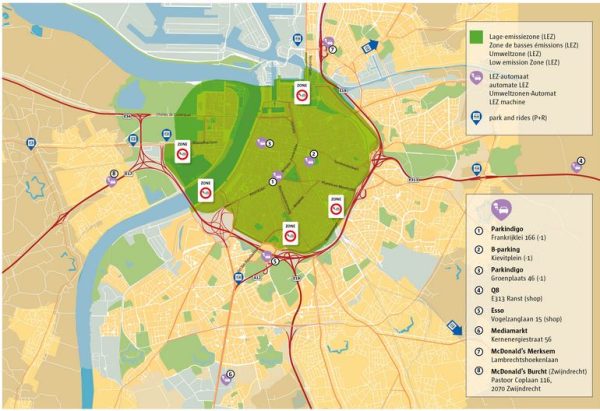
Among the ancient cities of Belgium, Bruges has preserved its medieval appearance almost intact to this day with the greatest perseverance and care.
It is called “dead Bruges”, “sleepy Bruges”, and it really sleeps among the luxury of ancient buildings, quiet canals, humpbacked bridges, green embankments, immersed in the past, long gone. Seven tower fortress gates no longer protect its wealth, but only majestically remind of its former glory. It originated sometime in the 7th century, experienced a flourishing in the Middle Ages, becoming the center of world trade in the 12th-15th centuries due to its proximity to the sea, deep shipping channels and the wealth of the townspeople. About two hundred thousand people lived in it, but now the population of Bruges is about 120,000 people.
What to see
Bruges is small, but it is naive to think that you can see all the sights within a few hours. You will need two full days to see the city. After all, it does not matter in which direction to walk, in Bruges there is no single tourist route and historical center. The city has been completely preserved, and no matter which direction you go, it will be beautiful everywhere.
History of Bruges – Story in date
From about 270 BC Roman era. On the territory of modern Bruges, in all likelihood, there was a Gallo-Roman settlement.
The emergence of the city
The missionaries preached Christianity in “minicipium flandrese” (Bruges).
OK. 650 AD
First half of the ninth century
Norman attack
First coins
Minting of the first coins with the inscription “Bruggia” (Bruggia).
864-875
OK. 944
Construction of the cathedral
Start of construction of the Cathedral of St. Donatian on the model of the Palatinate chapel of the Cathedral in Aachen.
Assassination of Count Charles the Good
Charles I of Flanders
fr. Charles I de Flandres
Charles I of Flanders
13th Count of Flanders
June 17, 1119 – March 2, 1127
Predecessor Baudouin VII of Flanders
Successor Wilhelm Cleton
Birth ca. 1084
Odense, Denmark
Death March 2, 1127
Bruges, Burial place Saint Donatien Abbey, Bruges
Rod Dynasty Sven Estridsen
1127
OK. 1200
First international fair in Bruges
The heyday of the city 1280
The fire of the first lookout tower Belford and the start of construction of a new one
Belford tower carillon bells Luiden van de Triomfklok
The historic part of the city is taking shape.
The construction of the city rampart in the shape of an “egg” preserved in its original form to this day.
1297 -1302
Bruges Morning
The struggle of Flanders for liberation: the uprising against the French king, Philip the Handsome, which began with the Bruges Matins on May 18, ends with the Battle of the Golden Spurs on July 11, this day is celebrated as Flemish Unity Day.
Construction of the town hall
1376
14th century
City gate construction
Beginning of the Burgundian era
Marriage of Marguerite van Male, daughter of the Count of Flanders, to Philip the Bold, Duke of Burgundy.
1384
1436
Artist Jan van Eyck is finishing work on the painting “Madonna with Canon Van der Paele”
The painting is in the collection of the Groninge Museum
Beginning of the Habsburg era
Marriage of Marguerite van Male, daughter of the Count of Flanders, to Philip the Bold, Duke of Burgundy.
1477
1482
Death of Mary of Burgundy
An uprising against Maximilian followed by social unrest that leads to the fall of Bruges, signaled by the ringing of bells. Zvin is covered with sand.
Sunset Bruges
1559
Bruges becomes the seat of bishops
End of the Austrian era
French invasion of Bruges 1794
1800
Demolition of Saint Donatian Cathedral
Absolute decline in the development of Bruges
19th century
1815 – Beginning of the Dutch Era
After the Battle of Waterloo, the French occupation ends.
Restoration of the “17 Historical Provinces” (Belgium and Holland)
Belgian Declaration of Independence – 1830
1883
Railway in Bruges
The first railway station is under construction.
Romantic reimagining of history
Following the mood of the era of romantic historicism, a monument to Jan Breidel and Pieter de Koninck is erected on the Grote Markt square.
1887
1892
Georges Rodenbach’s book “Dead Bruges” is published
The novel that made the city touristic: “Dead Bruges”
Bruges new life
1907
The sea symbolically returns to Bruges
Construction of the port of Zeebrugge.
World War I
German troops occupy Bruges.
1914-18
1930
Opening of the Groeninge Museum.
The Second World War
Bruges is occupied by German troops.
1940-44
1971
City reforms. The suburbs join Bruges as part of the government reform.
The entire historical center of the city is included in the UNESCO World Heritage List.
2000
Writer Rovendo
Original content license agreement Creative Commons Attribution 4.0 license







